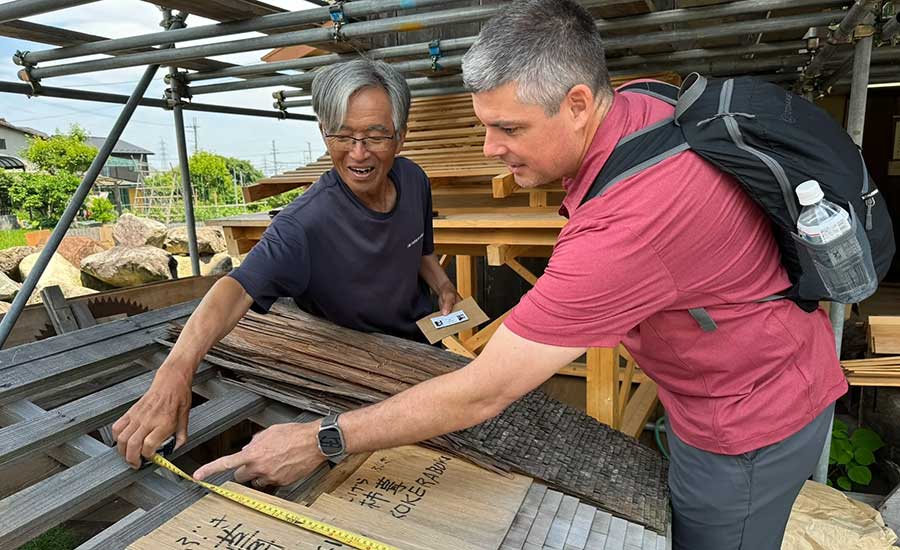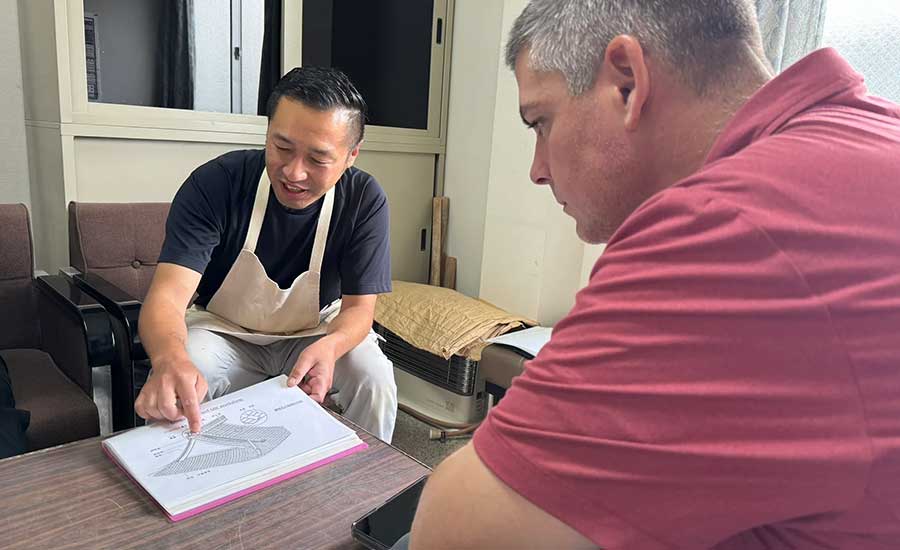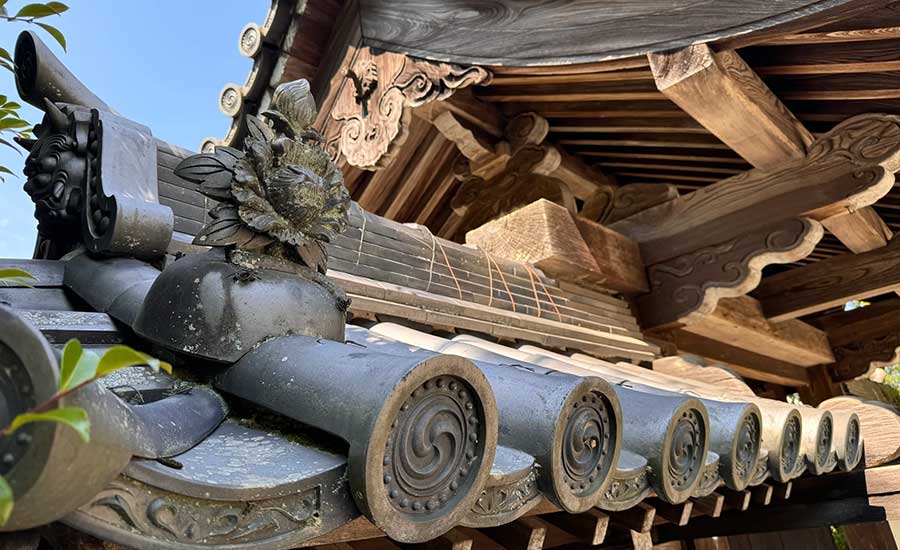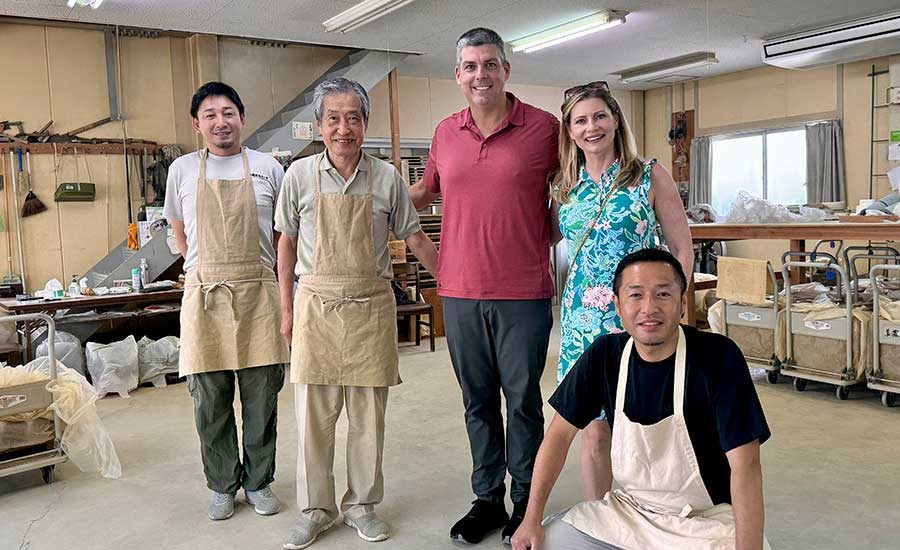Stuck between the past and the future, Japan is a nation of culture that is true to its heritage, customs, and traditions, while leading the world in innovation, technology, and efficiency. As an outsider, Japan’s unspoken rules can leave a visitor paralyzed in fear of standing out, more than someone not of Japanese descent already does.
It is striking how a country cut off from the rest of the world for more than 800 years during the fascinating period of samurai warriors, Shogun leaders, and warring dynasties caught up to modernization, then passed it to become the world’s leading innovator. Japan’s respect for people, nature, and history is the key to this futuristic transformation. As an avid world traveler, I had no idea what was in store for me as I entered my 71st country and how my career in roofing would be affected.
Kaizen is more than just a belief; it’s almost a religion in Japan. The constant commitment to lifelong learning and improvement, or Kaizen, as it is called in Japan, was infused with W. Edward Deming’s “The Total Production System” shortly after the conclusion of WWII. Deming, the creator of our census system, traveled to war-torn Japan to help the Japanese economy rebound after utter destruction from the only wartime use of nuclear weapons crippled industries, supply chains, and workers. His travels, often on horseback and in small towns, focused on teaching the lessons of creating good product design before starting any production processes to minimize customer defects.
A young Kiichiro Toyoda attended one of Deming’s sessions and saw the potential of infusing the system that helped America turn the tide of WWII with the Shinto belief structure into the most robust business process ever created. In Japan, the Toyota Production System (TPS) is how work is done, regardless of industry. It has become a worldwide phenomenon duplicated throughout economies, companies, and organizations with similar results.

In most instances, a roofing contractor is both the manufacturer and installer for a job. This cradle-to-grave mentality is part of the lean framework Japan is famous for.
My goal was to Genchi Genbutsu (essentially, “Go see for yourself”), a TPS mantra, by visiting Japan to see the pure form of this revolutionary system and how it could be incorporated into the roofing service industry. From the moment my wife, Jennifer, and I stepped off the plane, we were mesmerized by how efficient, respectful, and clean everything was. Here are a few examples:
- Stopping for lunch at a restaurant where over 300 people were served in one hour by only two employees was a sight to see. One person prepared the food, and another person served it. Before entering, there is a little kiosk where orders are placed and paid for. This made the entire process very efficient.
- Trains, buses, and subways are mostly privatized, but they all share the same booking system called “Suica.” This one app allows travel throughout the country via smartphone without worrying about individual transactions.
- There are no public trash cans. It would be disrespectful to rely on someone else to dispose of your trash. Everyone carries a backpack, briefcase, or purse where they retain their trash and dispose of it in train stations, 7-11s, or at home.
- Everyone brings their drying towel with them. There are no paper towels or drying machines in the restrooms. This helps reduce costs, paper products, waste, and cleaning costs. Instead, each person uses a handkerchief to dry their hands.
- When sitting on the subway, bus, or train, it often occurs when everyone uniformly stands up suddenly. At first, this is confusing because there doesn’t appear to be a rhyme or reason. Then you realize seats are prioritized for the elderly, pregnant women, or those with an injury. All stand in unison to allow choice of seats for respected individuals.
- If a train was late — by even a minute — the staff would all line up and bow in shame to ask for forgiveness. Ticket prices would likely be refunded. Being late is disrespectful.

Although there are differences, similarities between U.S. and Japanese roofing exist, such as generations of roofers, going back hundreds of years, continue family legacies today.
Roofing in Japan is as beautiful as it is functional. Pride in profession, honor in heritage, and quality in performance all culminate in producing roofing systems that last hundreds of years. Generations of roofers, going back hundreds of years, continue the family legacy today. Shinto belief states that a roof is the first barrier of protection from evil spirits. However, this protection should honor nature and mimic natural first principles of design. It is quite common to see rounded edges, natural building materials, and decorative accents on every roof, from residential to industrial.
In most cases, the roofing contractor is both the manufacturer and installer. This cradle-to-grave mentality is part of the lean framework Japan is famous for. They believe in just-in-time inventory where parts and pieces are created as needed and delivered to the jobsite daily. The eight forms of Muda (waste) are eliminated by controlling the entire process producing fewer defects, overproduction, waiting, wasted talent, transportation issues, inventory costs, extra motion, and minimized processing time. Over years of continuous improvement, Jidoka (quality) produced Gemba (value) to the customer through long-lasting and beautiful roofs.
Roofers often stop to fix the issues) once a problem is noticed so that the problem is not duplicated on future projects. Executives would never make decisions in a vacuum or in a conference room. They work through a process of Nemawashi (consensus), where changes are thoroughly thought out, and input is collected by all involved. Once a decision to change is made, execution is swift. Job sites, offices, and manufacturing facilities practice 5s (Sort/Straighten/Shine/Standardize/Sustain) out of respect for people, products, and processes. Everything is clean and orderly. Focusing on Takt Time (level workload) helps avoid over/under production so the system stays at peak performance.

Just one example of the beautiful roofing work found on Japan structures, which often use natural products versus those like asphalt.
Roofing materials are less composite in Japan than here in America. The Japanese prefer natural products such as wood, clay, and slate. Asphalt is virtually nonexistent in residential roofing. We had the opportunity to visit multiple, very large manufacturing factories and work with two different roofers. The first family is nationally recognized for their use of traditional processes and materials to replicate historic roofs when replacement occurred. This is an eighth-generation roofer where the 73-year-old father still works within the company every day. It’s completely a family affair.
When the company is mixing a fresh batch of clay, all hands are on deck, including women and children pitching in to help mix, transport and protect the clay. It is common for roofers back home to focus on function and sacrifice appearance, not in Japan and certainly not in this company. Spending days working on one piece of clay was amazing, making it absolutely perfect.
The second company we visited was committed to preserving the traditional use of bark wood. They source it from open forest trees and install the bark in layers for maximum durability. To keep things sustainable and traditional, wooden nails are made and used. The uneven edges are cut even to make an aesthetically pleasing look. Internships are common all the way down to the middle school level as schools identify students whose talent aligns with the roofing trade. Even facing a population collapse where the average birthrate is 0.6%, there is no shortage of roofers.
We have much to learn.
If you have not yet visited Japan, it’s an absolute must. The dollar is strong versus the yen, English is spoken everywhere, and locals use Google Maps to get around. Food is fresh, inexpensive, healthy, and amazing. A great 10-day itinerary starts in Tokyo for a few days, followed by a visit to the Mr. Fuji countryside, then Kyoto, and finishing in Hiroshima.
If you prefer a guided tour and/or a lean tour experience, please email ken@mrkenkelly.com for recommendations.
